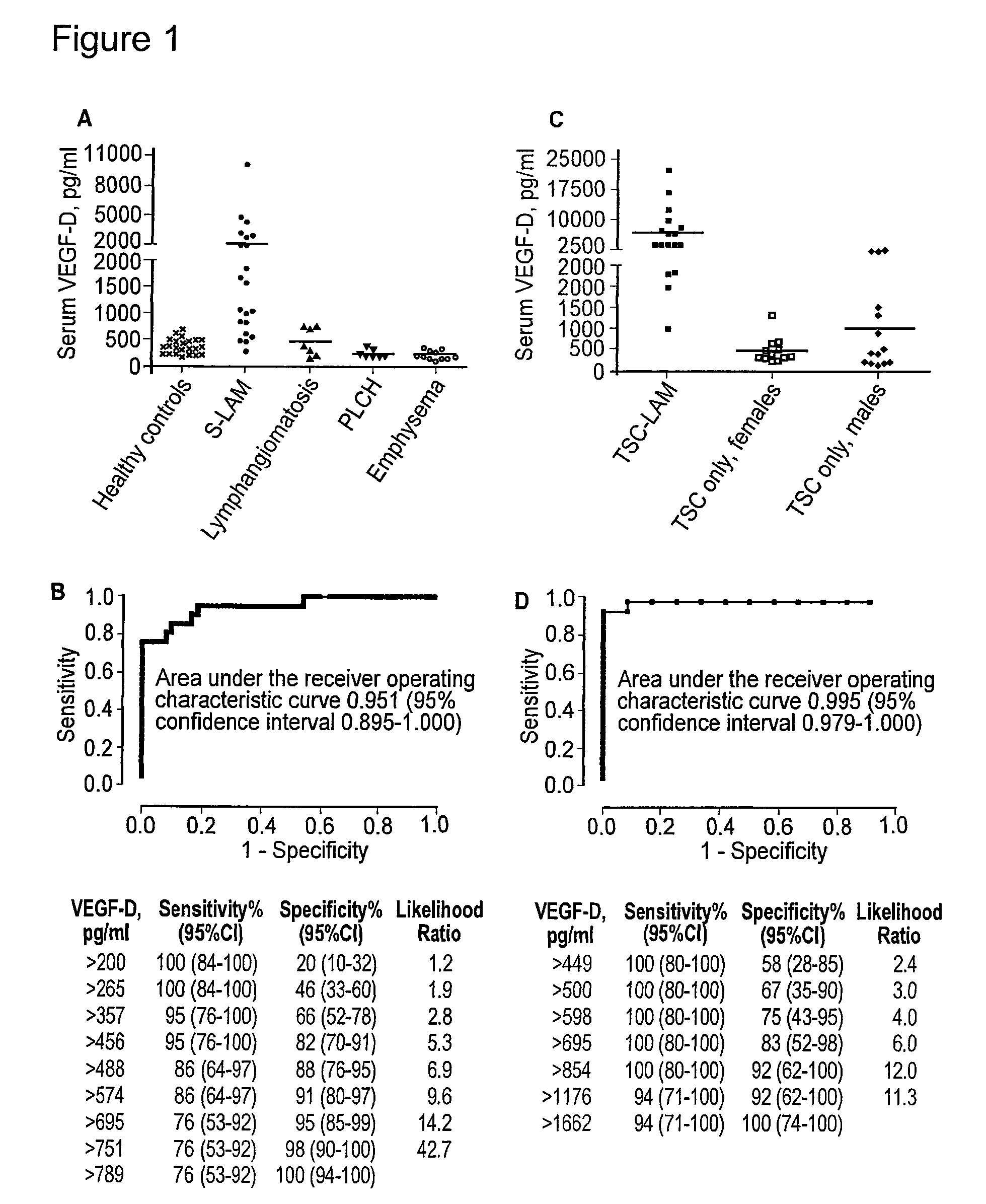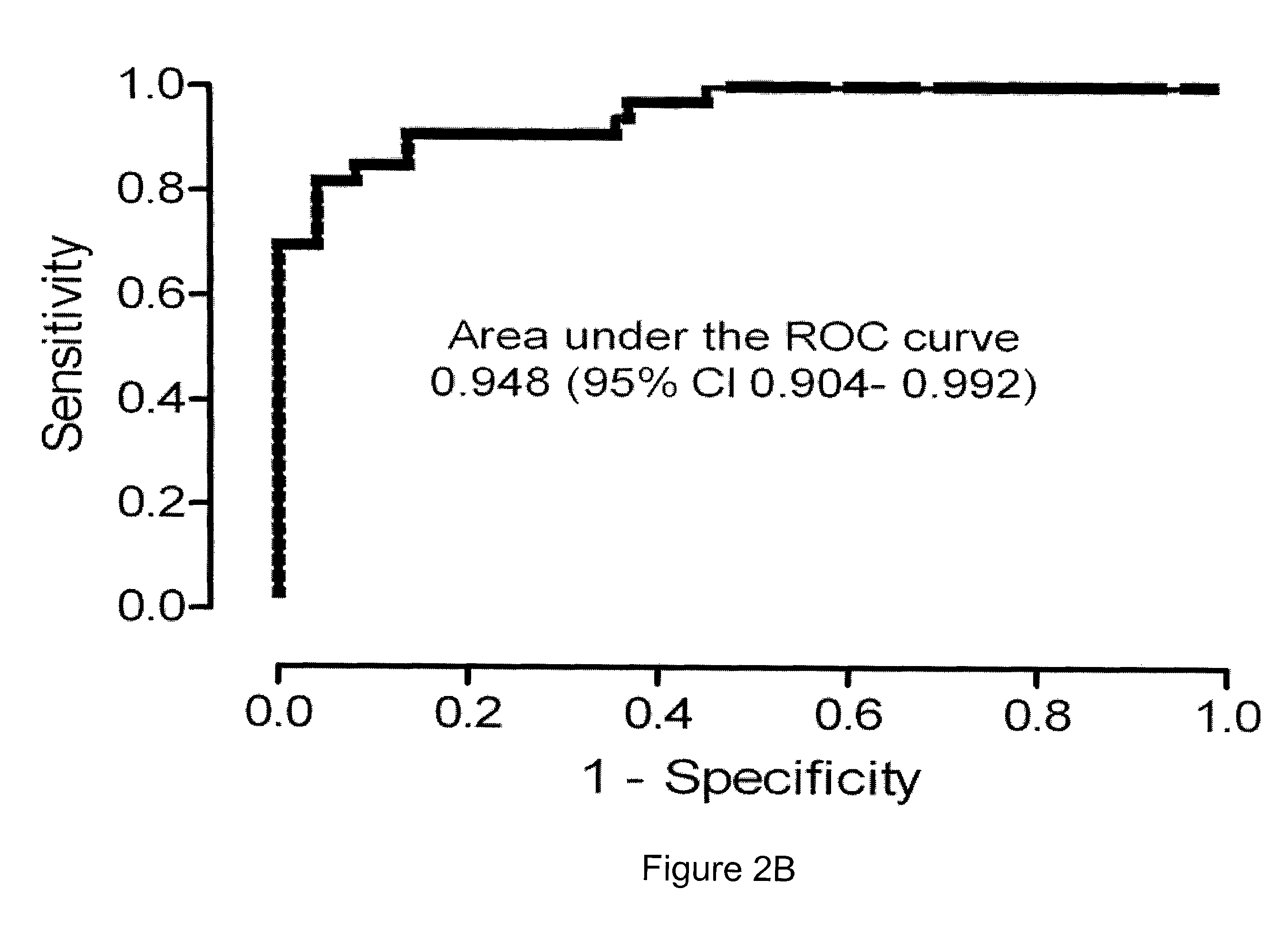Use of VEGF-D in the diagnosis of lymphangioleiomyomatosis (LAM) disease
a lymphangioleiomyomatosis and lymphangioleiomyomatosis technology, applied in the direction of instruments, applications, metabolism disorders, etc., can solve the problems of obstructed lam and difficult diagnosis of lam
- Summary
- Abstract
- Description
- Claims
- Application Information
AI Technical Summary
Benefits of technology
Problems solved by technology
Method used
Image
Examples
example 1
Serum VEGF-D is a Diagnostic Test for LAM
[0125]LAM is a rare progressive cystic lung disease of women, which occurs in the presence and absence of tuberous sclerosis complex (TSC-LAM) and sporadic or (S-LAM), respectively. The following Example demonstrates the diagnostic utility of evaluating VEGF-D levels in order to distinguish LAM from other clinically overlapping respiratory disorders.
[0126]Sample Processing and Storage: Blood was drawn using the blood draw kit provided by the Clinical Research Lab. 10 mL of blood was added to a serum separator tube and immediately inverted 8-10 times and then allowed to sit for at least 15 minutes at room temperature for proper clotting before centrifugation. The serum separator tub was then centrifuged for 10 minutes at 3500 rpm. If samples were not centrifuged within 60 minutes of the collection, then this irregularity was noted. The layer of serum above the separator gel was immediately transferred to a storage tube and vortexed. The serum ...
example 2
Serum VEGF-D can be Used to Monitor Efficacy of Treatment
[0137]Serum samples were obtained from a subset of subjects before and after treatment with Sirolimus in the Cincinnati Angiomyolipoma trial (CAST). Results indicated that VEGF-D levels can be used to monitor efficacy of treatment with Sirolimus. See FIGS. 3A-3C.
PUM
| Property | Measurement | Unit |
|---|---|---|
| concentration | aaaaa | aaaaa |
| concentration | aaaaa | aaaaa |
| concentration | aaaaa | aaaaa |
Abstract
Description
Claims
Application Information
 Login to View More
Login to View More - R&D
- Intellectual Property
- Life Sciences
- Materials
- Tech Scout
- Unparalleled Data Quality
- Higher Quality Content
- 60% Fewer Hallucinations
Browse by: Latest US Patents, China's latest patents, Technical Efficacy Thesaurus, Application Domain, Technology Topic, Popular Technical Reports.
© 2025 PatSnap. All rights reserved.Legal|Privacy policy|Modern Slavery Act Transparency Statement|Sitemap|About US| Contact US: help@patsnap.com



